
Stomach (Anatomy) Definition, Function, Structure Biology Dictionary
The human stomach is subdivided into four regions: the fundus, an expanded area curving up above the cardiac opening (the opening from the stomach into the esophagus); the body, or intermediate region, the central and largest portion; the antrum, the lowermost, somewhat funnel-shaped portion of the stomach; and the pylorus, a narrowing where the.
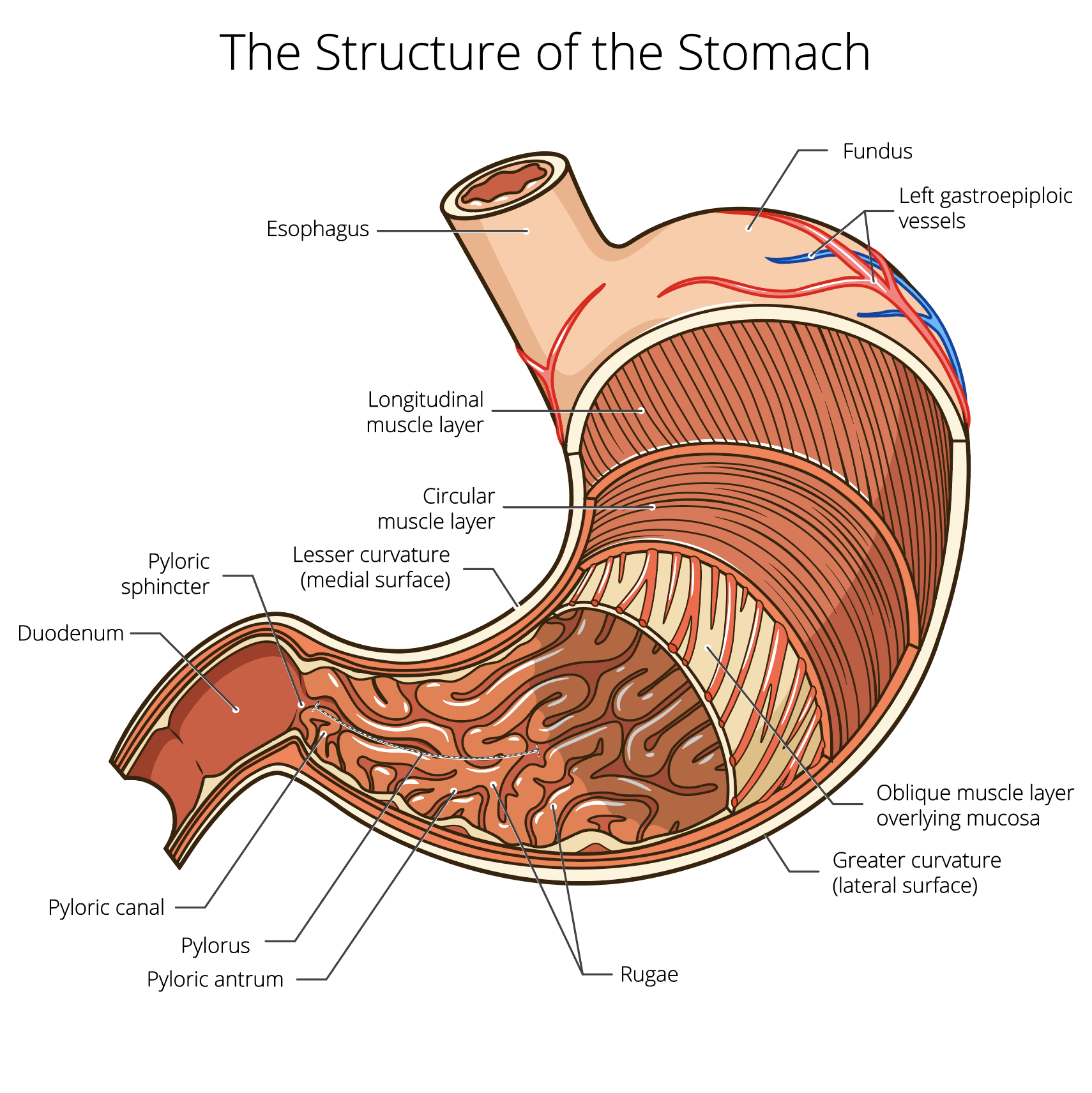
Stomach — High Plains Surgical Associates
Label on a diagram the four main regions of the stomach, its curvatures, and its sphincter Identify the four main types of secreting cells in gastric glands, and their important products Explain why the stomach does not digest itself Describe the mechanical and chemical digestion of food entering the stomach

Anatomy Of Chest And Stomach Human Chest Anatomy Diagram Physiology, Anatomy and The
Learning Objectives By the end of this section, you will be able to: Label on a diagram the four main regions of the stomach, its curvatures, and its sphincter Identify the four main types of secreting cells in gastric glands, and their important products Explain why the stomach does not digest itself

The Anatomy of the Abdomen Human Stomach Health Life Media
The stomach is an important organ and the most dilated portion of the digestive system. The esophagus precedes it, and the small intestine follows. It is a large, muscular, and hollow organ allowing for a capacity to hold food. It is comprised of 4 main regions, the cardia, fundus, body, and pylorus. The cardia is connected to the esophagus and is where the food first enters the stomach. The.
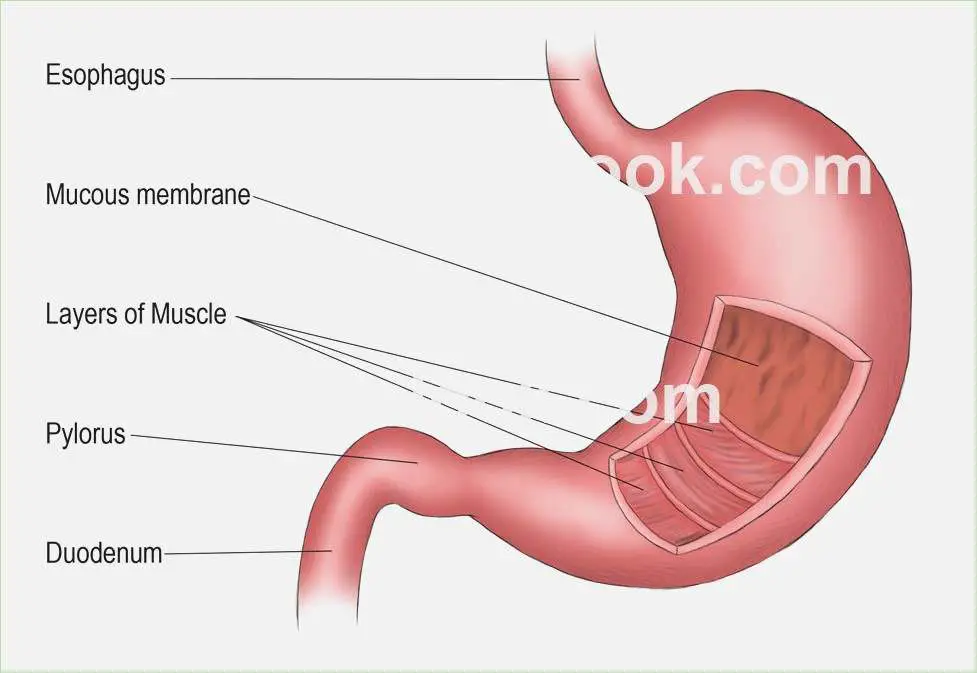
Diagram of stomach
Overview The digestive system is made up of the gastrointestinal tract-mouth, esophagus, stomach, small & large intestine, and rectum. What is the stomach? The stomach is a J-shaped organ that digests food. It produces enzymes (substances that create chemical reactions) and acids (digestive juices).

stomach model Google Search Anatomy models labeled, Anatomy models, Human anatomy and physiology
Digestion The stomach, gallbladder, and pancreas work together as a team to perform the majority of the digestion of food. Food entering the stomach from the esophagus has been minimally processed — it has been physically digested by chewing and moistened by saliva, but is chemically almost identical to unchewed food.
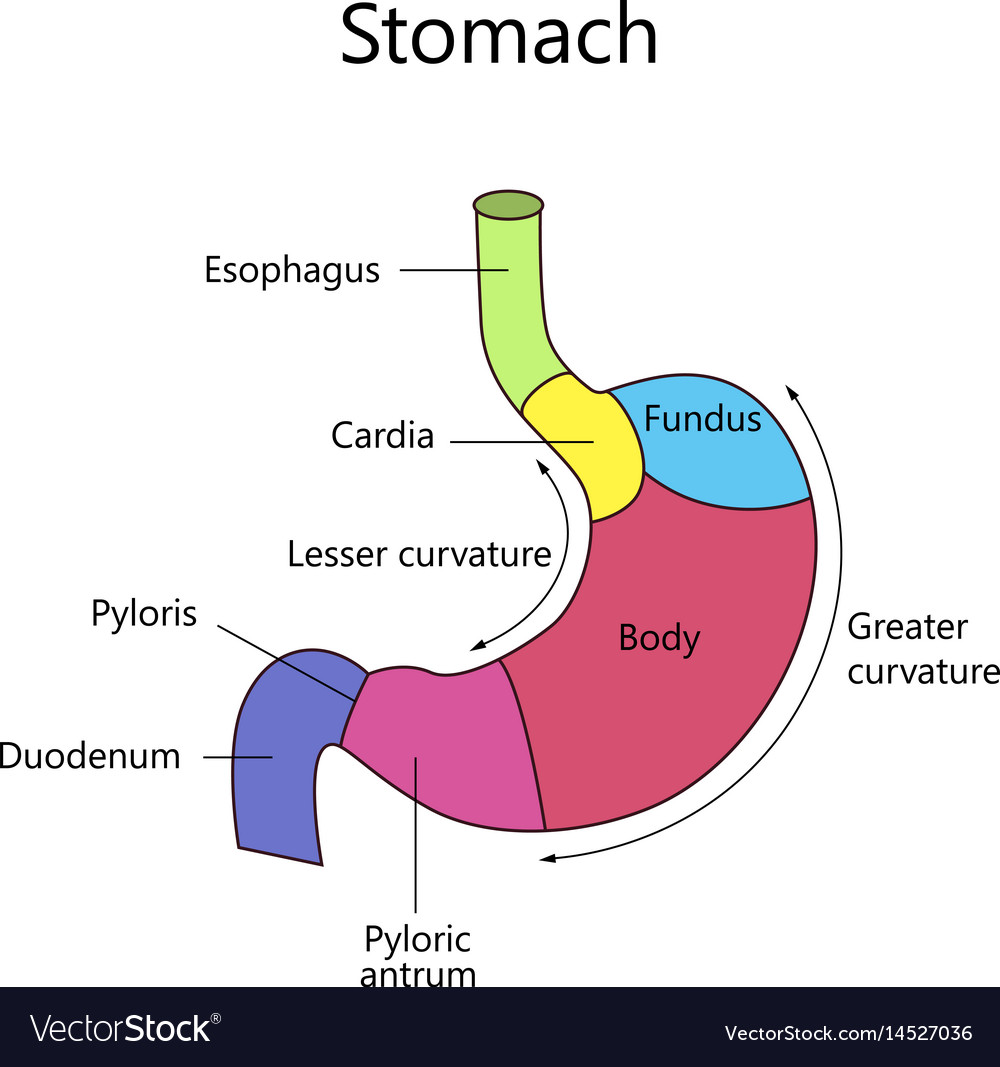
Internal structure human stomach Royalty Free Vector Image
Picture of Abdomen The abdominal cavity is the part of the body that houses the stomach, liver, pancreas, kidneys, gallbladder, spleen, and the large and small intestines. The diaphragm marks the top of the abdomen and the horizontal line at the level of the top of the pelvis marks the bottom.
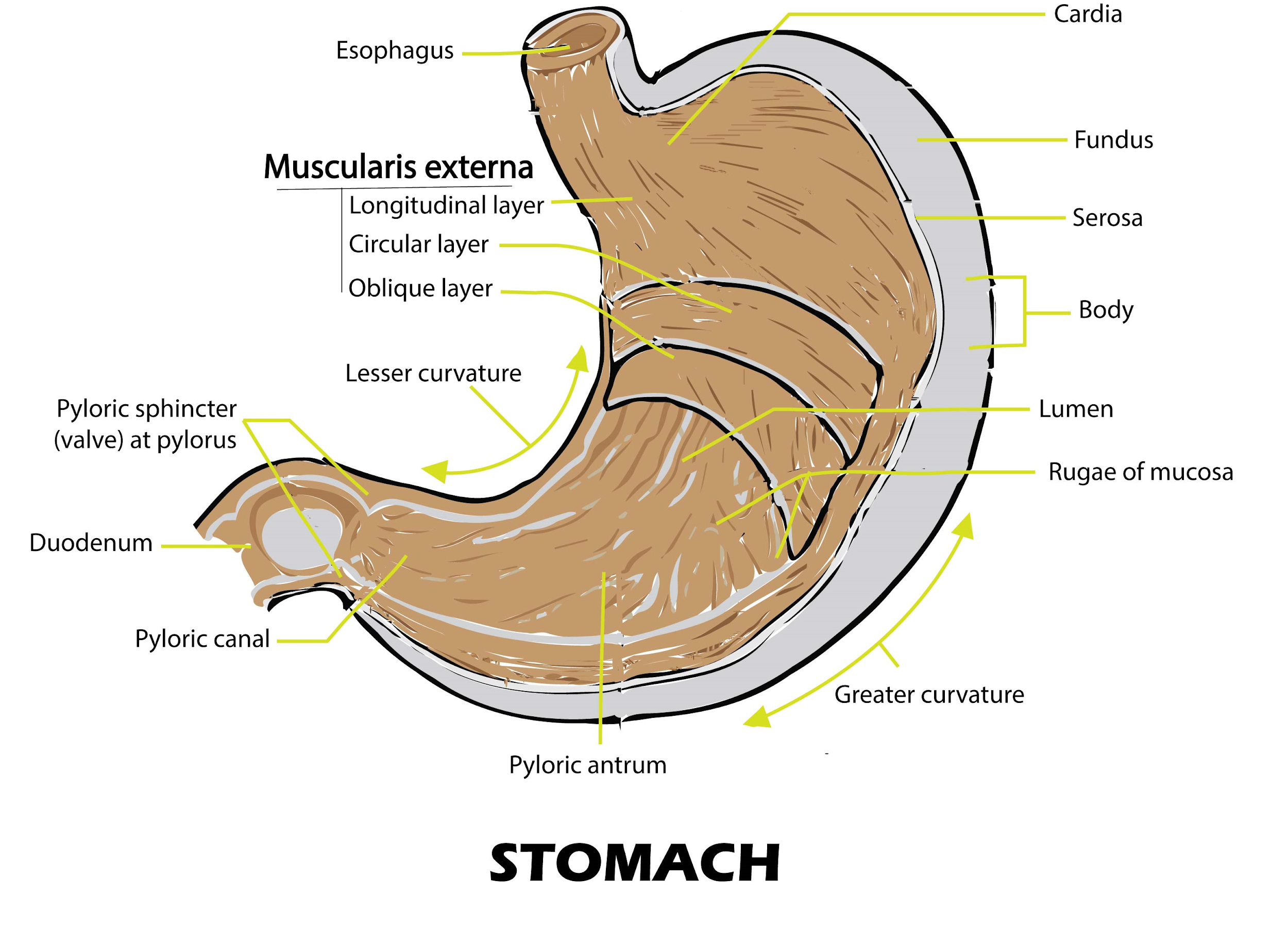
How is the shape of the stomach?(a) As V(b) As J(c) As O(d) None of the above
The stomach is lined by a mucous membrane that contains glands (with chief cells) that secrete gastric juices. Two smooth muscle valves, or sphincters, keep the contents of the stomach contained: the cardiac or esophageal sphincter and the pyloric sphincter. The arteries supplying the stomach are the left gastric, the right gastric, and the.

The Stomach Organs Parts, Anatomy, Functions of the Human Stomach
The innermost layer of the stomach wall is the gastric mucosa.It is formed by a layer of surface epithelium and an underlying lamina propria and muscularis mucosae. The surface epithelium is a simple columnar epithelium.It lines the inside of the stomach as surface mucous cells and forms numerous tiny invaginations, or gastric pits, which appear as millions of holes all throughout the stomach.
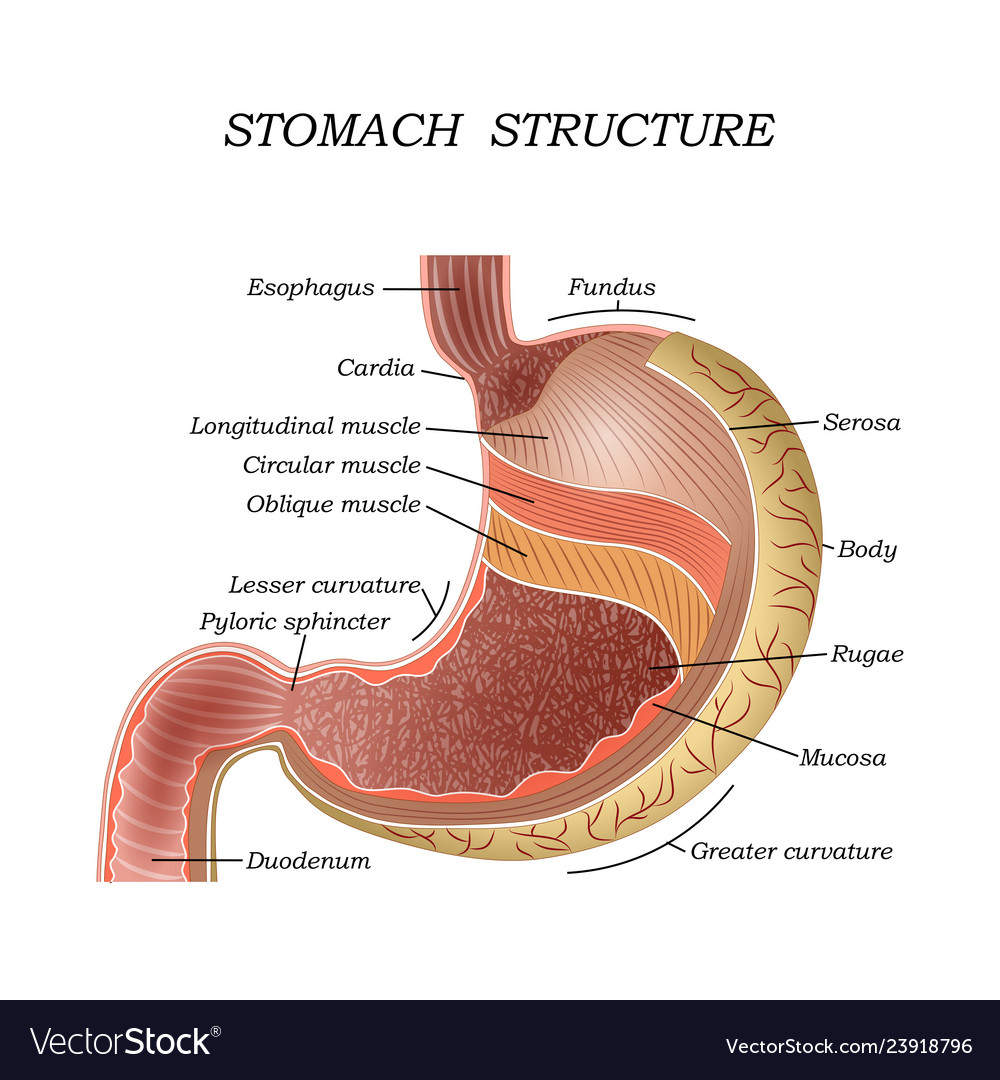
The structure of the human stomach Royalty Free Vector Image
The stomach has four main anatomical divisions; the cardia, fundus, body and pylorus: Cardia - surrounds the superior opening of the stomach at the T11 level. Fundus - the rounded, often gas filled portion superior to and left of the cardia. Body - the large central portion inferior to the fundus. Pylorus - This area connects the.
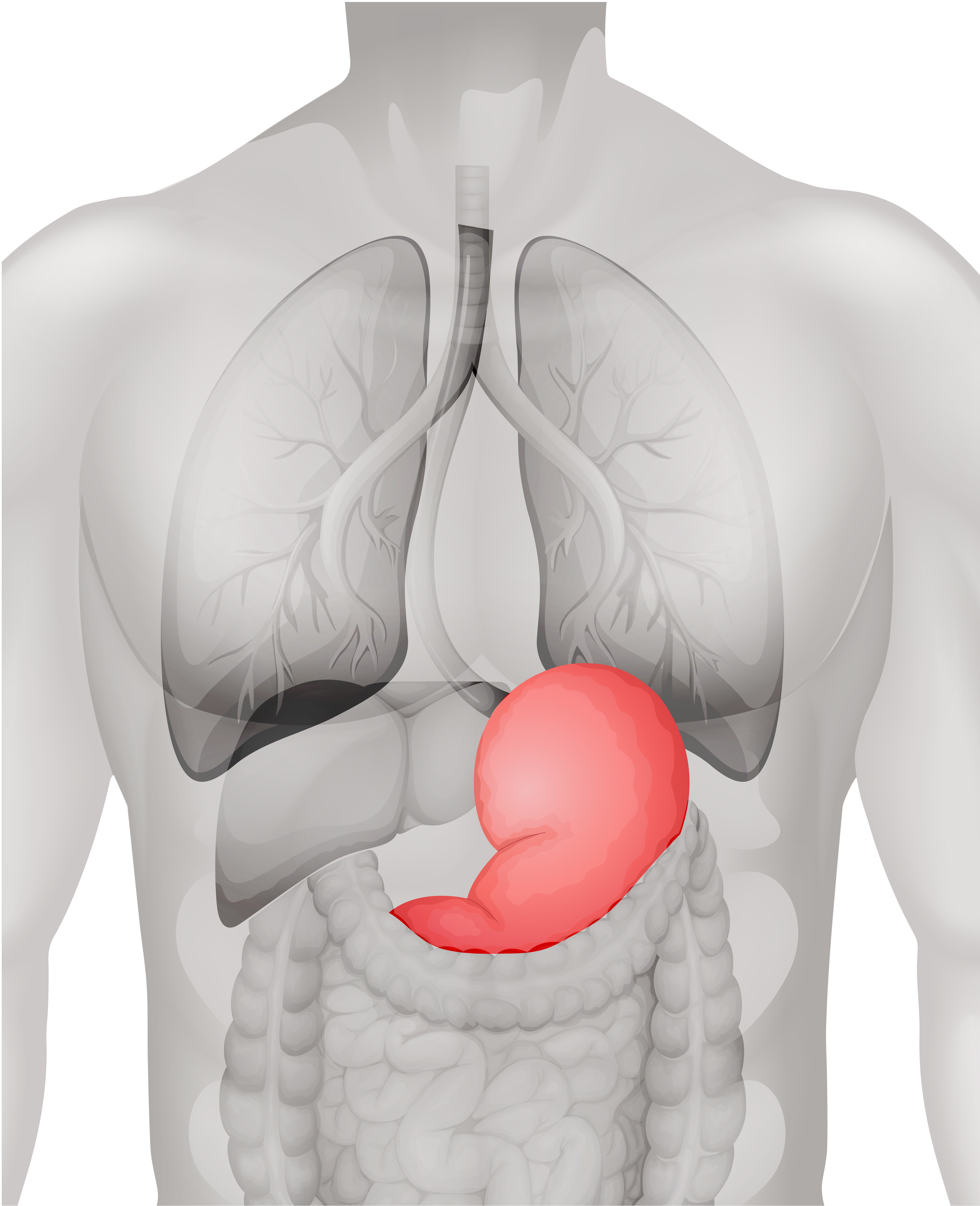
Human stomach diagram in detail 365742 Vector Art at Vecteezy
There are four main regions in the stomach: the cardia, fundus, body, and pylorus (Figure 21.4.1 21.4. 1 ). The cardia (or cardiac region) is the point where the esophagus connects to the stomach and through which food passes into the stomach. Located inferior to the diaphragm, above and to the left of the cardia, is the dome-shaped fundus.
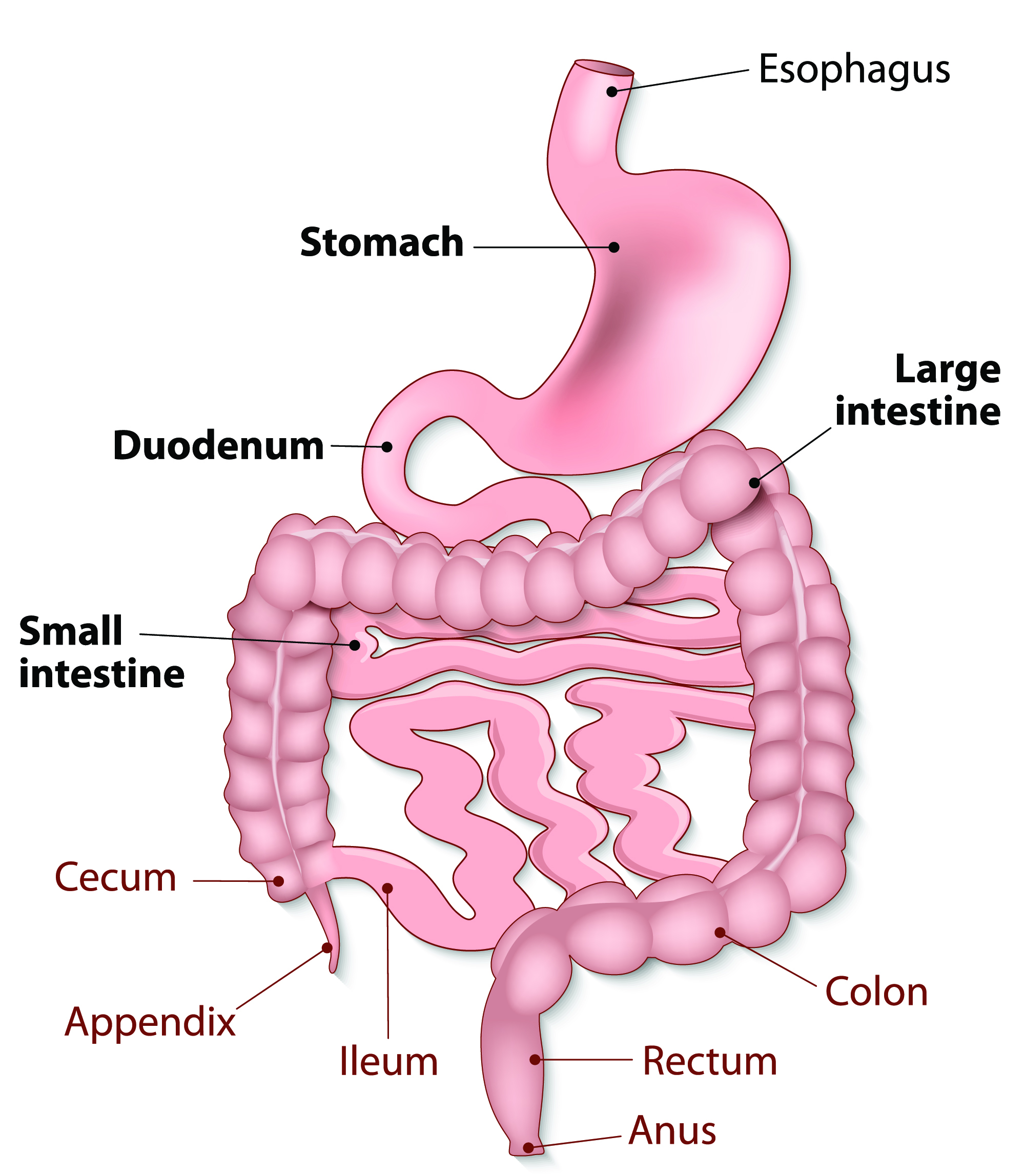
How Your Gastrointestinal Tract Works MU Health Care
The cardia (or cardiac region) is the point where the esophagus connects to the stomach and through which food passes into the stomach. Located inferior to the diaphragm, above and to the left of the cardia, is the dome-shaped fundus. Below the fundus is the body, the main part of the stomach.

Human Stomach Anatomy Vector Illustration With Labels Stock Illustration Download Image Now
01 of 03 Anatomy of the Stomach STEVE GSCHMEISSNER/SPL/Getty Images The wall of the stomach is structurally similar to other parts of the digestive tube, with the exception that the stomach has an extra oblique layer of smooth muscle inside the circular layer, which aids in the performance of complex grinding motions.
:background_color(FFFFFF):format(jpeg)/images/library/11880/stomach-mucosa-and-muscular-layers_english.jpg)
Stomach Anatomy, function, blood supply and innervation Kenhub
ISSN 2534-5079. This e-Anatomy illustrates the gross anatomy of the digestive system. We focused especially on the diagrams of the abdominal digestive system (oesophagus is described on the modules about the thorax and oral cavity/pharynx on the ENT modules). 84 anatomical diagrams and histological images with over 300 labeled anatomical parts.
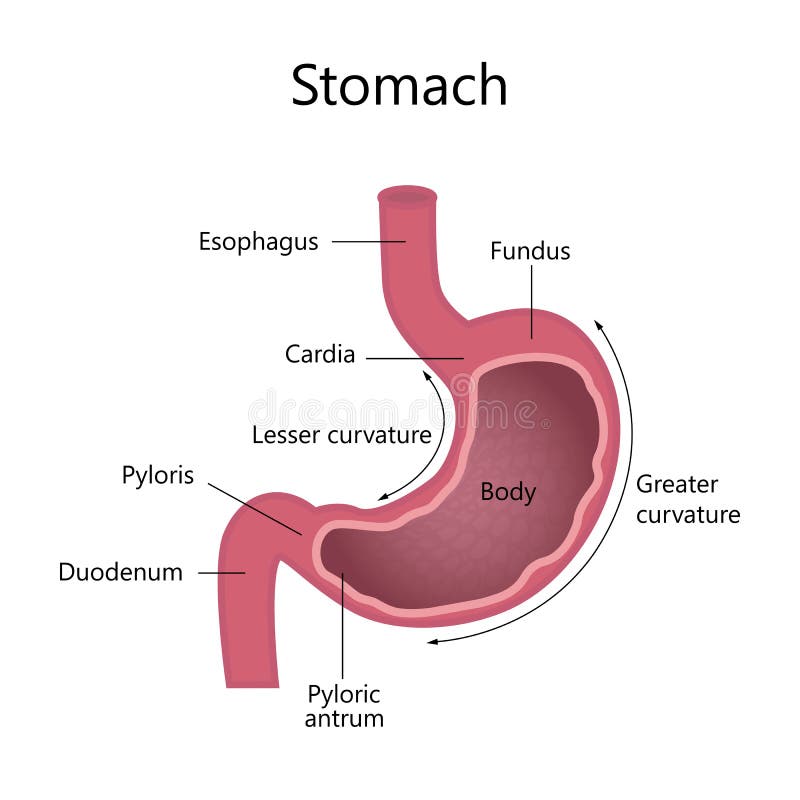
Internal Structure Human Stomach Stock Vector Illustration of medicine, healthy 91532703
Given below is a labeled diagram of the stomach to help you understand stomach anatomy. The stomach is divided into four parts. These include: Cardia Fundus Body Pylorus Cardia refers to the section of the stomach that is located around the cardiac orifice. The lower esophageal sphincter lies at the junction where the esophagus meets the stomach.

Stomach Diagram Labeled EdrawMax Template
Diagram Stomach Gallbladder Liver Pancreas Small intestine Large intestine How they interact Common problems Summary The stomach is located in the upper part of the abdomen. The digestive.